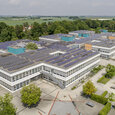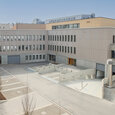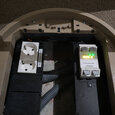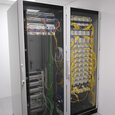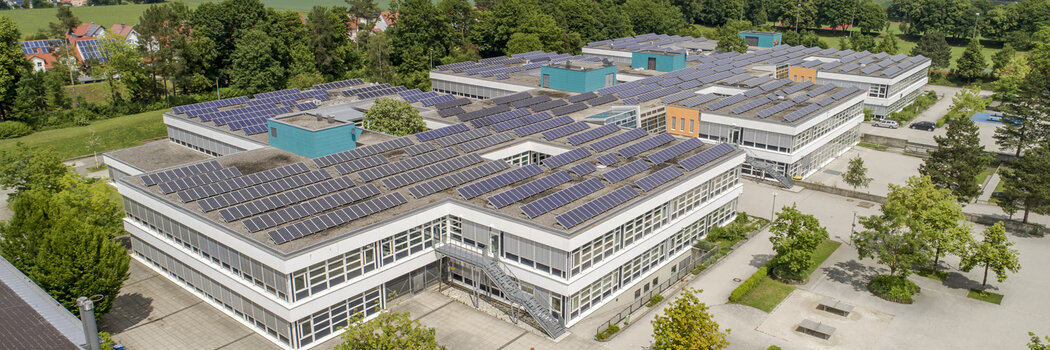
Centralized and lean IT: Augsburg County show the way at their schools
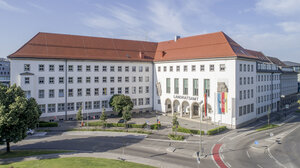
Successful pioneers
The pandemic caught many schools in Germany cold. In most cases, IT concepts in education were still in their infancy. One of the few exceptions in the school landscape was the district of Augsburg. As early as 2003, a forward-looking decision was made here that the entire IT for the schools should be centrally managed by a dedicated team. The result: the 15 schools in the district were able to rely on a functioning infrastructure at the start of the pandemic. Hardware and software are managed centrally by the Augsburg district as the responsible authority, the schools are connected to an MPLS network, and the decision to use a cloud-based collaboration platform was already made in 2017.
Fire safety concerns
Within the schools, the team led by Robert Wegner, deputy IT manager of the Augsburg district and responsible for IT at the schools, relied for many years on fiber optics in the backbone and copper cabling on the floors. However, when two schools in Schwabmünchen needed to be brought up to date in terms of network technology, this concept reached its limits. Safe copper cabling was not possible in the existing old buildings, and concerns about space requirements and fire protection weighed too heavily. An electrical planner brought a new idea to the table: Why not simply run the fiber optic cabling all the way to the classrooms?
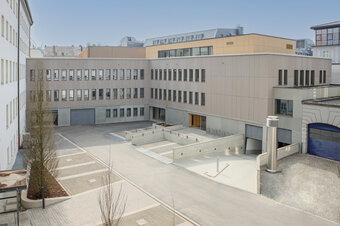
Lean alternative
The IT team gathered information, explored the market and quickly came across the Fiber To The Office technology from MICROSENS. The good experience of the Munich University of Applied Sciences as a reference customer convinced Robert Wegner and his team. In two smaller projects, 27 and 17 MICROSENS Micro Switches were initially installed. A complete success: The installations ran smoothly and the results met all requirements. Robert Wegner explains in retrospect, "We were really amazed at how much easier the cabling became with Fiber To The Office technology." Since then, the IT team has been equipping all schools that are being renovated or newly built in terms of network technology based on the new concept. And the technology is now also being used in new buildings or renovations at the district administration office itself. By the end of 2022, more than 1,000 micro switches will have been installed by the Augsburg district.
Efficient installation
All classrooms will be equipped with one micro switch in the front and one in the back. Each switch has five RJ45 ports and a fiber optic uplink that connects to the fiber. For the fiber optic cabling, the team opted for single mode fiber. For Angelo Baumann, who oversees the district office's network projects himself as part of the IT team, the FTTO concept offers maximum flexibility. He explains: "Cat 6 cabling not only takes up a lot of space, it is also limited to 1 Gbit/s in terms of transmission speed. If higher data rates are to be transmitted in the future, new cabling would have to be installed. The fiber connections to the offices or classrooms, on the other hand, could be used for higher speeds without rewiring if needed."
In addition, significantly fewer rooms are needed overall, as Robert Wegner explains: "Thanks to FTTO, we generally need one server room per school. The vocational school, which we still wired in the classic way in 2017, had to keep four widely spaced server rooms ready for us. Five times more copper wiring was required and 3,000 copper cable ends had to be patched." FTTO technology also significantly reduces the fire load: The micro switches provide Power over Ethernet (PoE) in the offices; up to 60 watts per switch can be used by end devices. If the PoE option had to be used in the backbone, the fire load there would increase significantly.
In addition to the simple cabling, the installation of the Microsens components is also very easy: When ordering the components, the IT team already specifies the required information via an Excel list, so that the switches are delivered pre-configured. The installations are then carried out by a specialist on site.
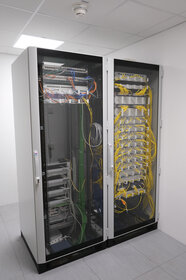
Constructional advantages
With regard to the structural design of the switches, Robert Wegner focused on two aspects that play an important role for applications in educational institutions: "An RJ45 connection is concealed in a cable duct. This is very convenient for us, especially in schools. We connect the WiFi access points via it and thus protect them from being tampered with." In addition, the IT team chose the option of powering the Micro Switch via a plug instead of connecting it directly to the network. If a Micro Switch needs to be replaced, this can be done by the janitor, for example, without having to hire an electrician.
He sees a major advantage in the large number of different buildings in which the Micro Switches are installed in the selection of accessories. Up to now, he has still been able to find the right part for every cable duct in the 70-page catalog of installation components. To manage the Micro Switches, the IT team in Augsburg relies on the network management system from Microsens. All devices can be monitored via this system, and updates can be managed centrally. There have been no component failures so far, and the team is very satisfied with the reliability of hardware and software.
Strategic use
Fiber To The Office is the technology of choice for the IT team at the Augsburg district office. Angelo Baumann is currently planning the new extension to the district office, which will also be equipped with micro switches. Robert Wegner's agenda also includes two new school buildings in the district by 2025, both of which will be equipped with FTTO technology. He explains, "Wherever we need to upgrade the networks, we use Microsens technology. This gives us the greatest possible flexibility and provides us with an economically very efficient solution."
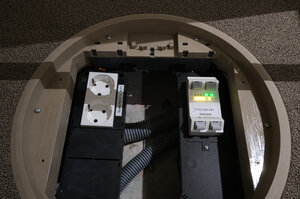
© Photo material with kind permission of the district office Augsburg
About MICROSENS
Transmitting information via fiber optic connections offers numerous benefits. MICROSENS GmbH & Co. KG recognised this very early on. As one of the pioneers, the company has developed and produced high-performance communications and transmission systems in Germany since 1993. Individually matched to the demands of diverse usage areas and embedded in comprehensive concepts for individual sectors. But, above all, close to the customer. Technical challenges from customer projects are incorporated directly into product development. This way, IP-based automation solutions are created for modern buildings, cost-efficient network concepts for the office and workspace, robust and fail-safe solutions for industrial environments, optical transport systems future-oriented wide area networks and efficient coupling of sites and computer centres.







